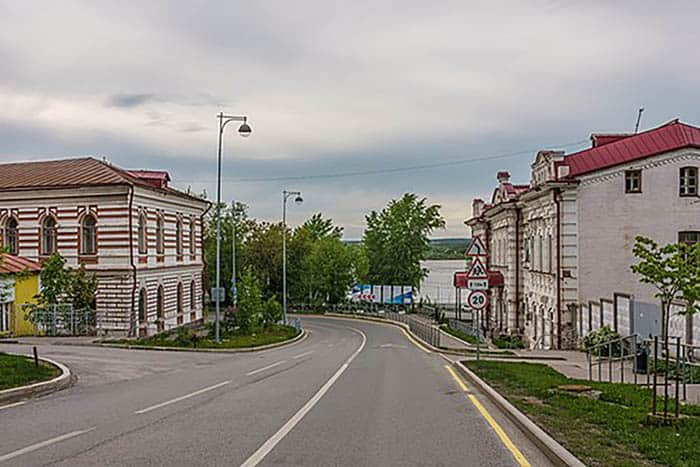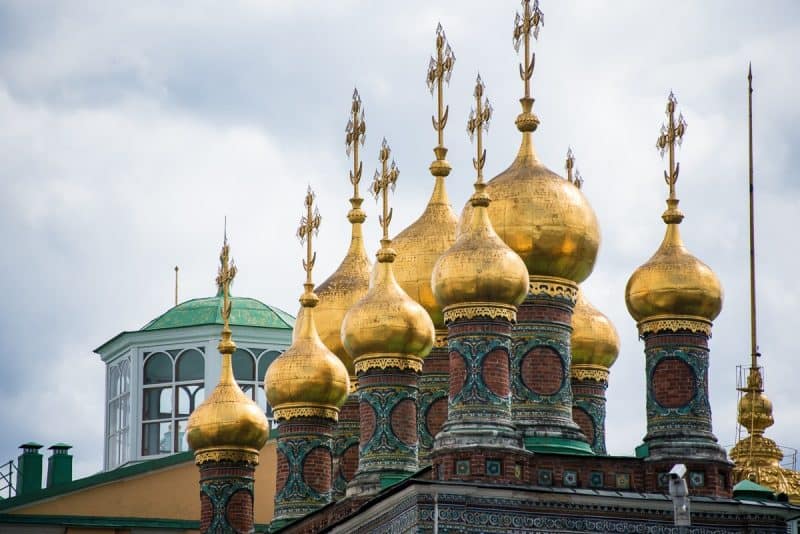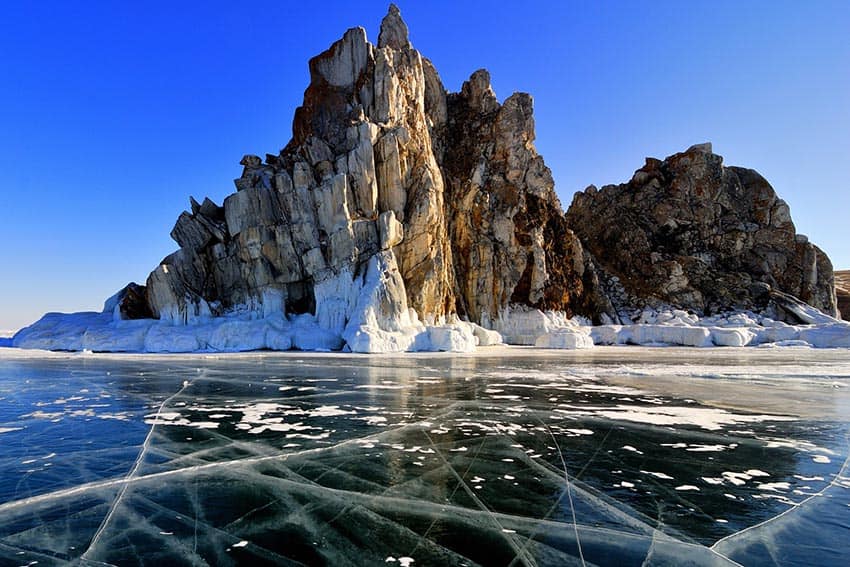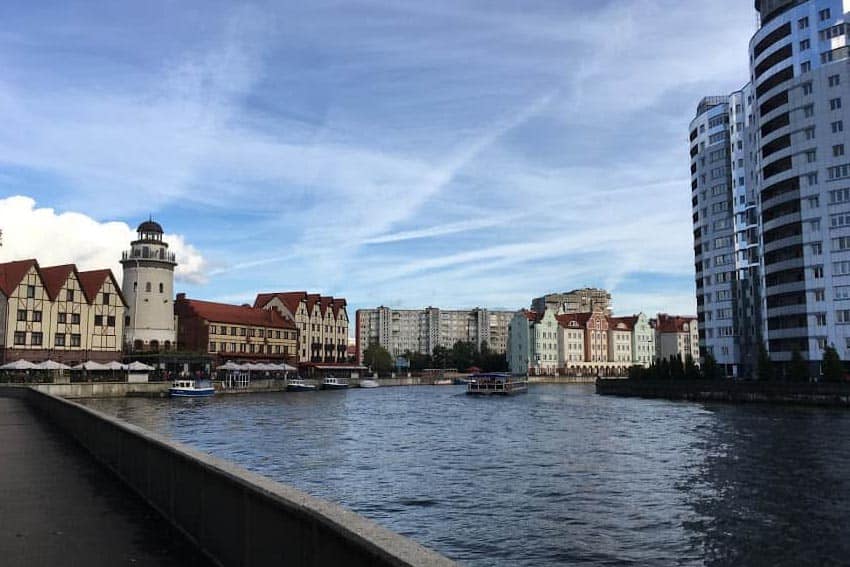
The Iron Ring: Russia’s New Tourist Route?
By James Pearce

Tourist routes are as old as tourism itself. They are quite logical from a geographic, economic or social perspective. Nowadays, the ‘in’ thing is interregional tourist routes.
From a marketing perspective, promoting (and selling) multiple places under a common theme is easier. The influx of more people brings life and mass development not just to the tourist route itself, but its peripheral territories. Everybody wins! Well, sort of.
The problem is that pulling off a new route requires the existence of solid infrastructure, obvious ways and means of improvement, a marketing niche, and human capital – preferably the educated or entrepreneurial classes. Oh, and lots of cold hard cash.
Russia’s answer to interregional routes is to make them ring-shaped – and by all accounts they are very successful. The idea is to finish where you start, connect more people and places together, forge a new local identity, and in the process, improve the local economies and infrastructure across a much larger geographic space.
Russia’s tourist rings began in the late Soviet era, with The Golden Ring. It was created by journalists and historical preservationist societies in the Golden Ring cities, a collection of six to eight cities to the northeast of Moscow that are the spiritual and cultural heartlands of Kyivan Rus’, dating back 1,000 years.

They built it out of an existing motoring route, attached it to local demands of preserving the ancient buildings and used that to boost a sluggish tourism industry. These centuries old churches and monasteries and picturesque landscapes brought tourists with money via the capital Moscow.
A Bygone Era for Soviets

It offered Soviet citizens an escape from modernity into a mythical past of a bygone era known only in books and folk tales, and foreign tourists the opportunity to stay longer and see more. The Golden Ring also spurred local development, paving the way for new businesses, radio stations, universities and modern transport.
Today, it remains highly popular, particularly among families with school aged children, pensioners and those looking for weekend getaways. It was only a matter of time before other regions wanted a niche ring route. More have popped up, including a tour of estates around the Moscow Region and the Silver Necklace in the northwest.
But the latest part of Russia wanting to jump on the bandwagon can be found on the border between Europe and Asia in the Ural Mountains: The Iron Ring.

The Iron Ring’s branding is modeled on the Golden Ring in more ways than one. The idea is to show off a different part of Russia that both foreign and domestic tourists wouldn’t have visited or be much familiar with.
The name ‘Iron Ring’ comes from the region’s heavy industrial nature, namely in mineral extraction, non-ferrous metallurgy, military production and the fact it is an important logistics center, connecting two powerhouse continents. The region’s economic success also holds the key to the route’s success as it is an important hub between the two continents.
Buckets of Tourism Potential
If that doesn’t sound like something you’d want to visit, it is but the first of many issues with this potential ring route. That said, there are buckets of potential. Major cities and towns are included, as are the most significant natural and historical-cultural sites. You can choose where to begin and personalize your trip with ease. It also has the possibility for radial routes to branch out into off the trail territories.
But none of that answers the fundamental question: what even is the Ural Region? Defining it is quite tricky. There are no borders, geographic or administrative.

The idea of the ‘Urals’ lives strong in the hearts of locals, who are very proud of their identity. This local identity is rooted in the natural wealth and economic significance of this region. It is not Europe, Siberia, or Asia, but the Urals offer a taste of each in a unique geographic area.
So large is this region, the proposed new route would stretch from the northern non-ethnically Russian Komi Republic, through Permskiy Kray, down into the Sverdlovsk, Chelyabinsk and Orenburg regions, and into another non-ethnically Russian region, the Republic of Bashkortostan.
Immensely diverse, in the north are Finno-Ugric peoples, Tatar-Bashkirs further south, Udmurts, other smaller indigenous groups and Slavs virtually everywhere else. As well as heavy industry, it boasts sub-zero temperatures in winter, hits the mid 30s in summer, and is home to many precious stones.
28 Stops 
Given that most tourist routes have fewer than ten stops, the Iron Ring will include roughly 28! If one did this trip entirely by car, it would take weeks. Included are regional capitals such as Yekaterinburg, Orenburg, Chelyabinsk, Ufa and Perm as well as the second and third most populous cities where possible. In between are mountain ranges, national parks, lakes, rivers, quarries, and never ending forest wilderness.
Each large city stop has its own unique tours within the route. In Yekaterinburg, for example, city walks of different themes – be it cultural, historical or gastro themed – as well as out of city trips and geological tours in the region’s nature reserves. In Perm, you can go on a tour of the USSR’s last remaining gulag, Camp 36.
But there are a few major downsides to the Iron Ring. First are the challenges of ecology and climate change. Ash and smoke linger in the air as local forest fires are common. Forest fires in this region start in peat bogs, which can burn even in Russia’s cold and harsh winters. As recently as 2021, fires were still burning by December when the snow had already set, disrupting air travel.
That brings us nicely to the next issue: the weather. Temperatures in the winter months dip below -40. That means The Iron Ring will rely heavily on tourists from late April til late October; not the best timing for a tourist destination hoping to stand out.
Another is the route’s sheer size and diversity. Many domestic and foreign tourists prefer to visit one city or town at a time. In some cases, tourists choose to hit a number of towns, spending a day or two in each. Completing the entire route will be a tall order. The ring might, therefore, become a chain of sorts.

Connecting to that is the issue of transport and logistics. This is something of a double edged sword. On the one hand, a mixture of road, rail and river travel is available. That can be highly appealing, or a logistical nightmare as some parts of this route are more accessible than others.
The Komi Republic
The Komi Republic, for instance, is best accessible by air and has a quite dispersed and sparse population. Flights in and out are irregular and prone to cancellation unlike Orenburg, Perm, Chelyabinsk and Yekaterinburg, which all fly internationally.
That doesn’t mean the Iron Ring won’t take off. For tourists wanting a varied trip mixing cosmopolitan cities, the great outdoors and wilderness – and diverse groups of people – The Iron Ring suits perfectly. There are certainly smaller niches within it, meaning your trip can be highly personalized. But being so massive and diverse requires careful planning.
Nevertheless, tourism is a gaping hole locally and for that reason it is a necessary route. The Iron Ring can only bring benefits to the economically prosperous Ural Region. It is ready for tourists, but getting them to stay longer than a few days in more than one place is the mai challenge.

Dr. James Pearce is a journalist and cultural historian of Russia and the former Soviet Union. He has lived and worked in Russia, the UK, and the Marshall Islands and traveled extensively across Eastern Europe and the former USSR. James has written for several other outlets, such as The Moscow Times, bne intellinews, and New Eastern Europe Magazine. He is the author of The Use of History in Putin’s Russia. He is currently writing a history of Russia’s Golden Ring cities.
- Fall Clothing for Your Travels - August 30, 2024
- Mekong Chronicles: The River That Shaped Southeast Asia - August 28, 2024
- Gadgets and Goodies You Might Enjoy - August 27, 2024





